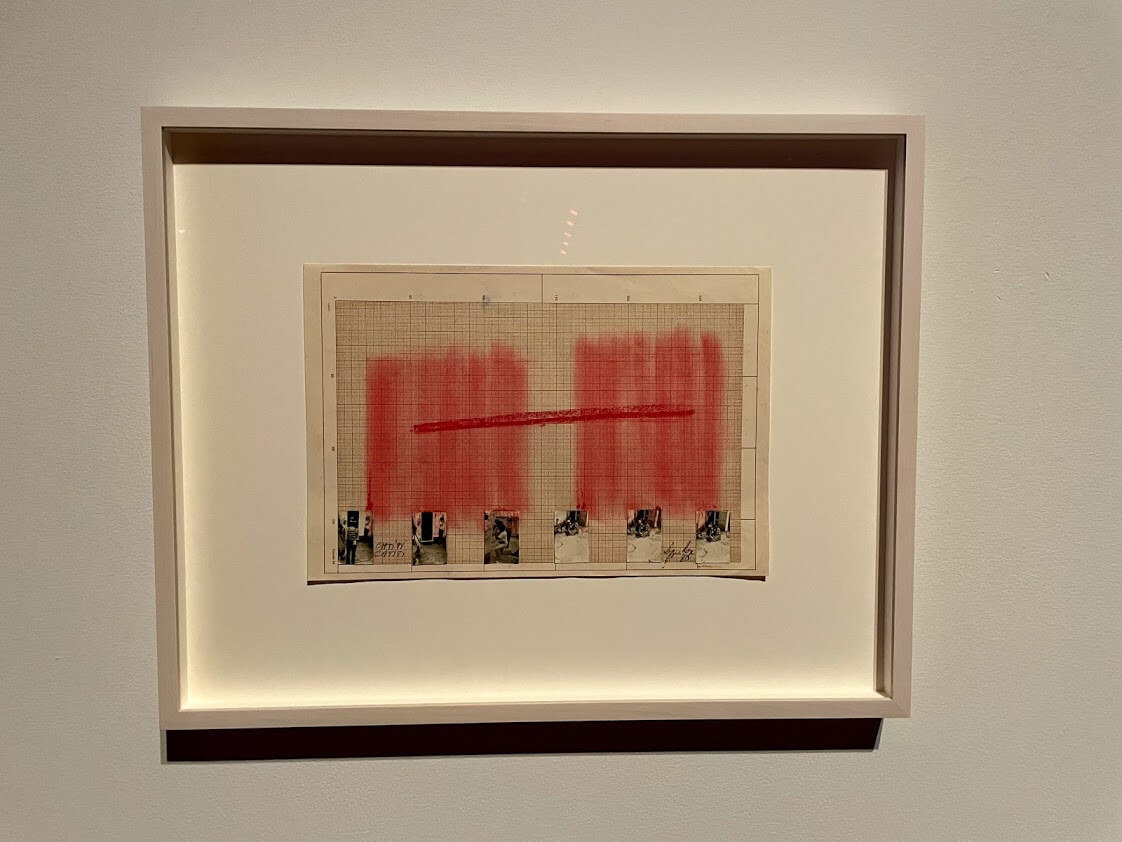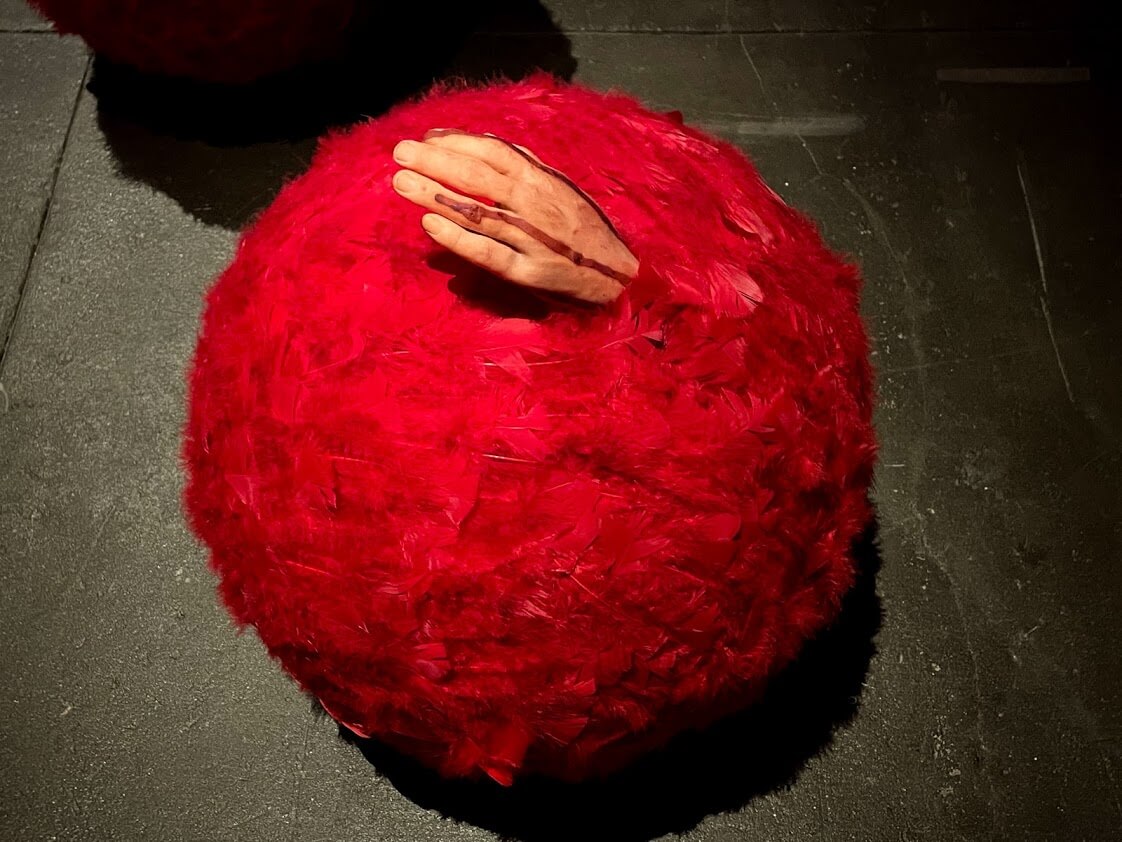2 minutes read
This first solo exhibition in Los Angeles of Brazilian artist Lygia Pape examines her Tupinambá series. She explores the impact of Brazilian Indians’ past over Brazil’s modern history.
Here is a look at” Tupinambá series.”
There are two galleries (North A, and North B) to discover Memórias Tupinambá and Tteia 1, C
Memórias Tupinambá
Memórias Tupinambá is displayed in a dark gallery. Art installations are highlighted by either red or white spotlights. The tone is set. Beautiful and terrifying aesthetic to examine cultural anthropophagy of indigenous Brazilian people.

Your eyes will catch the massive Manto Tupinambá at the center of the room. The sailcloth with four metal poles maintains 190 balls of artificial red feathers. Look closely to discover bodies parts sticking out like bones, and hands.

Did you know?
The artist uses artificial feathers to refer to Tupinambá feather art.

The sailcloth represents the arrival of European in Brazil and their colonial invasion of native people. At the same time, the cockroaches, the resilient insects ramping over the balls, refer to the indigenous people. They may be seen as unimportant, but their voices are still present today in Brazilian culture and art.


Did you know?
Only a few Tupinambá peoples survive like the Urubú Ka’apor tribe in the state of Maranhão.
There are other red-feathered balls and throne with silicone hands, feet, breasts, and a guitar! Also, this gallery includes drawings and a short video.




Tteia 1, C
Tteia 1, C is displayed in a dark gallery with a unique white spotlight over the installation. The silver stems are forming an X. Walk around for different perspectives and geometry illusion. The magic operates when the main door will open: the structure will disappear thanks to the daylight.
About the artist
Lygia Pape (1927 – 2004) was fascinated by the Tupinambá culture. She read and researched about them, especially about their anthropophagy.
Did you know?
There was a hierarchy to consume body parts: noble parts were for the chief.

Devouring prisoners, but only chiefs or warriors, was a ritual “not from hunger as in cannibalism, but to swallow and assimilate the spiritual capacities *.” For seven or eight moons, the victim lived with the tribe and learned a whole ritual for the death ceremony.
Lygia Pape believed that “the Tupinambá spirit endures in the Brazilian person.” *
‘*Source: https://www.hauserwirth.com/ursula/32269-manto-tupinamba-memories-lygia-pape and https://www.hauserwirth.com/hauser-wirth-exhibitions/31619-lygia-pape-tupinamba
Did you know?
German Hans Staden (c. 1525–1576) was captured by the Tupinambá and escaped his death ritual thanks to a French pirate.


Ready to visit this exhibit?
*COVID-19 update as of July 2021*
– Please wear a mask and practice a physical distance of 6 feet between yourself and others
– Please check L.A County’s health and safety protocols before your walk
Plan your visit:
- Exhibit on view from April 24th – August 8th, 2021
- Location: Hauser & Wirth, 901 E. 3rd Street, Los Angeles CA 90013
- Hours: 11 am – 6 pm Tuesday-Sunday.
- Admission: Free.
- Duration: I spent 30 minutes discovering it
- Parking: unmetered street parking and paid parking lot
- More information available at https://www.hauserwirth.com/hauser-wirth-exhibitions/31619-lygia-pape-tupinamba\
Article based on my visit in July 2021
If you enjoyed this post, please leave a comment and share it with an art lover.








Bonjour Marie,
Pas mal cette expo, un peu perturbante néanmoins.
Evidemment, l’oeuvre que je préfère, ça ne vous étonnera pas, est la guitare sur le trône en plumes rouges. De plus, c’est une FENDER, la marque préférée d’Eric Clapton et aussi la mienne. La différence, entre lui et moi c’est la maitrise de l’engin, pour l’instant.
A bientôt.
Yan
LikeLike
Bonjour Yan,
Effectivement, cette exposition était quelque peu perturbante. L’artiste Lygia Pape nous fait découvrir le peuple Tupinamba. en soulignant l’anthropophagie dans la culture Brésilienne.
La guitare était intriguante au milieu des membres du corps humain. Merci pour l’information concernant Eric Clapton, en espérant vous voir jouer prochainement.
A bientôt
Marie
LikeLike